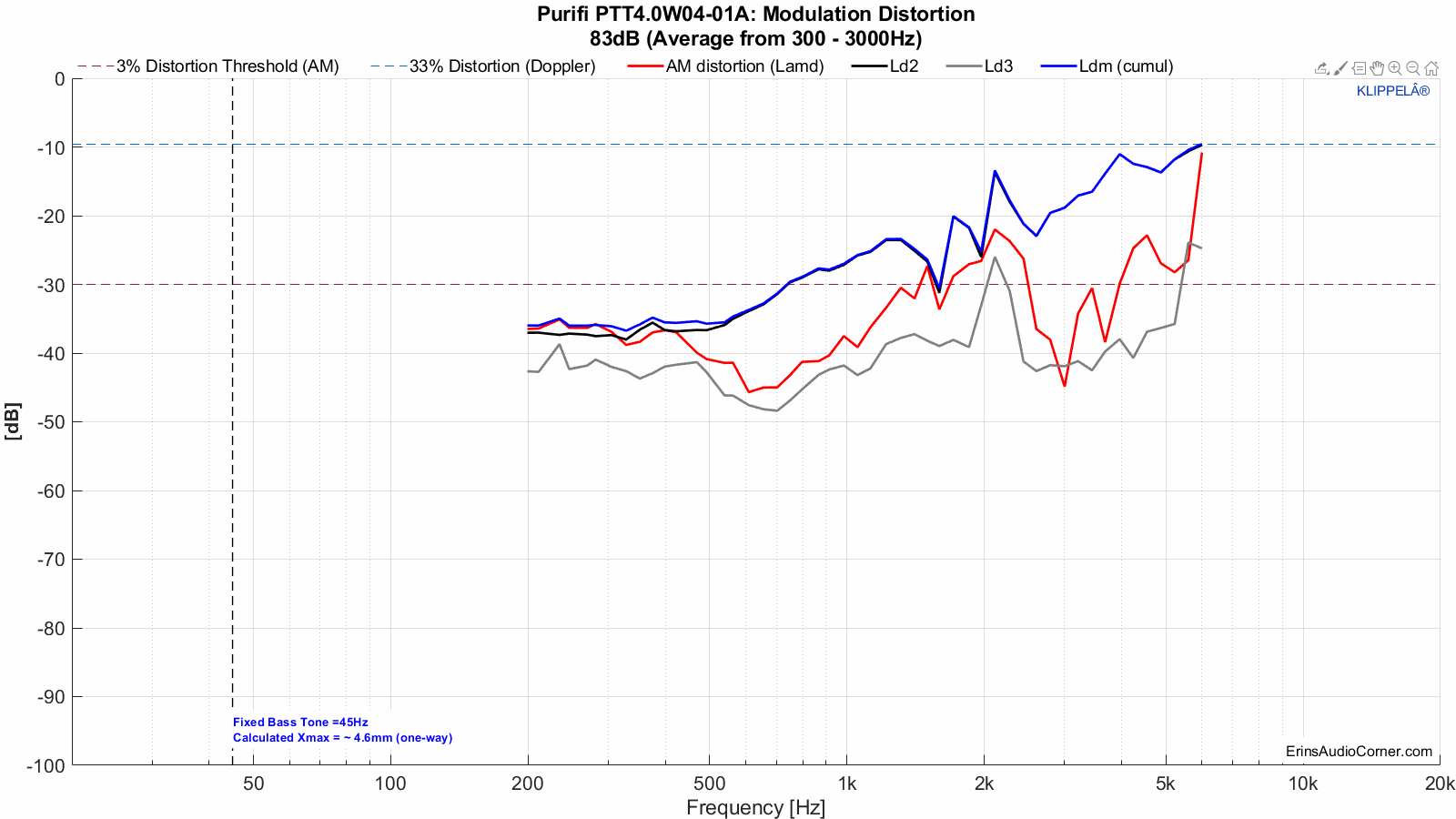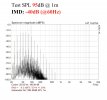I measured some IMD of the sound system at hand .
Description of system and conditions:
Loudspeaker: 2-way passive, closed box, DIY loudspeaker, 8" woofer and 1" horn loaded compression driver, crossover at 1500 Hz.
Preamps:
miniDSP SHD. Dirac and some other dsp enabled.
Amps:
Hypex NC400 monoblocks.
Mic: UMIK-1, 12 cm from baffle, midway between horn and woofer centers.
All RTA measurements were done with same positioning and volume settings, sweep may have had different volume.
Background noise sources: Computer, fan of Raspberry Pi, ticking clock. Untreated living room. Subjectively pretty quiet at the moment.
Software: REW.
Sweep: 20-20000 Hz, 256k.
RTA: FFT 64k, Blackman-Harris-7, 4 averages.
The conditions were not ideal, but thats irrelevant to the scale of findings.
Some basics, SPL and phase:
View attachment 131289
Normalized distortion:
View attachment 131290
This graph is important to compare against IMD measurements below. This speaker is quite good in frequencies from 100 Hz and up distortion being around -50 dB and less.
Spectrum of background noise. The fan of Raspberry shows quite well:
View attachment 131291
Now something more interesting. First 1 kHz sine wave to give perpective:
View attachment 131292
2nd harmonic is close to the Raspberrys fan, but third rises above it. H3 is some >60 dB less than fundamental. There is also mains related 50 Hz spike, although I wonder how it gets there. It's possible to be sourced elsewehere than the actual speaker. Next I used REW dual tone generator and selected the predefined "SMPTE 60 Hz & 7 kHz 4:1", results:
View attachment 131293
Fundamentals tones are as they should, IMD barely above noise floor (remember the raspberry). Lower tone comes from woofer and upper tone from the tweeter. Next "DIN 250 Hz & 8 kHz 4:1":
View attachment 131294
Yup, rising IMD. This is two tones, image what real music looks like. Again lower tone from woofer and higher from tweeter. The next graph is last preset "CCIF 19 kHz & 20 kHz 1:1":
View attachment 131295
Well now, if you wonder why manufacturers don't post their IMD results, it's because they look awful and would scare anyone away. I can't hear the fundamentals with my hearing, but I do hear the distortion loud and clear! Should real music have this much hf content, it would smear the whole response band and probably sound terrible. Lowest distortion product is the only spike below crossover frequency.
If I move the mic up to tweeter center, hf distortion above crossover frequency gets louder and the spike below it gets quieter. When I move it down to woofer center, exact opposite happens. This implies that the distortion is in fact generated before the speaker and the speakers passive crossover splits it to drivers. The electronics of this system are very high quality, each has been measured on this site and are within the top rank of tested devices and have fantastic measured performance. Switching Dirac dsp on/off with the miniDSP remote made no real difference, results were as ugly as ever.
So what gives? That CCIF must be a real torture test, since it generated so much intermodulation distortion and the other test results were a lot more comfortable. Care to share your IMD?
EDIT: A few typos and mistakes. Should proofread first -_-'










